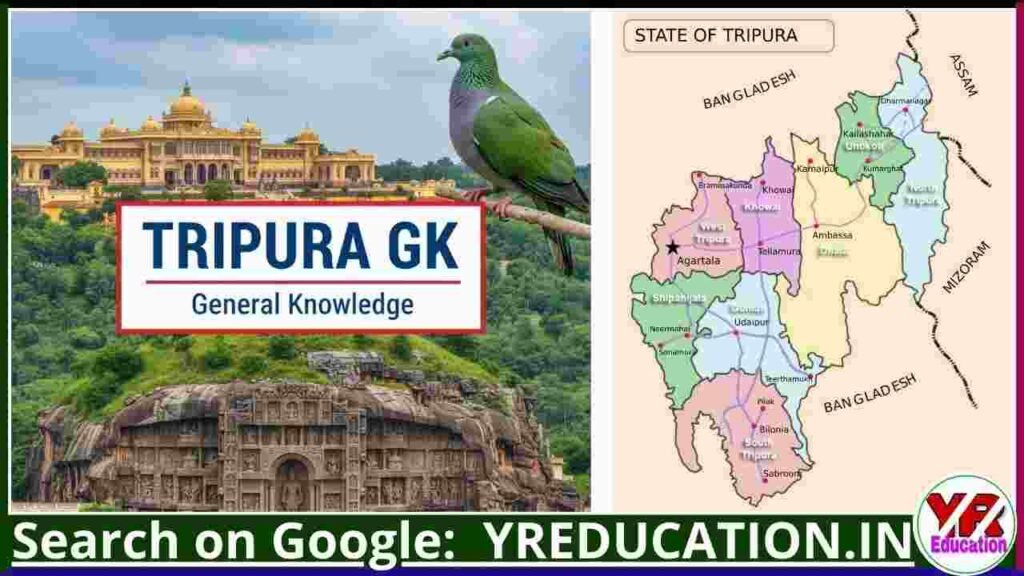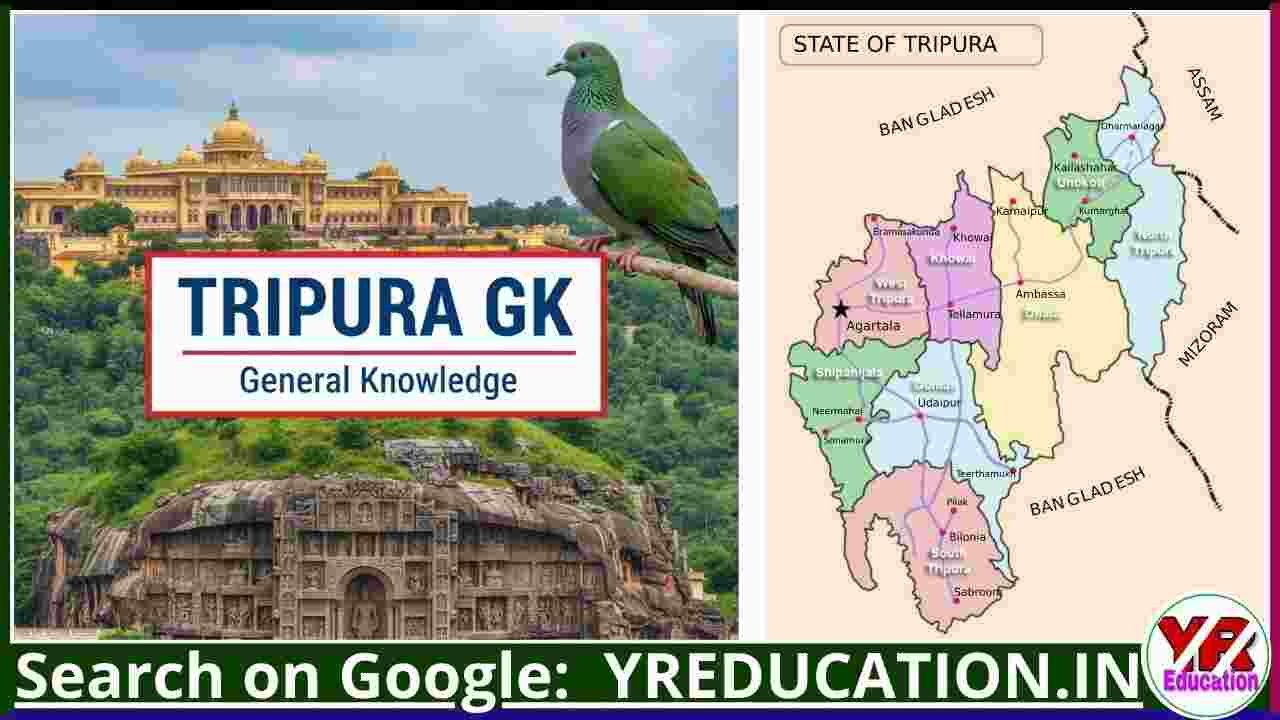Tripura GK: Know about Your State Tripura

Tripura is a small but culturally vibrant state located in the northeastern part of India, and it is one of the “seven sister” states of the region. Bordered by Bangladesh on three sides—north, south, and west—and by Assam and Mizoram to the east, Tripura covers an area of about 10,491 square kilometers, making it the third smallest state in India. The state’s capital and largest city is Agartala, situated near the Bangladesh border and serving as the administrative, economic, and cultural hub.
Historically, Tripura was ruled for centuries by the Manikya dynasty and was a princely state during the British colonial period; it formally became a part of India in 1949 and attained full statehood in 1972.
Tripura’s population is a blend of indigenous tribal communities such as the Tripuris, Reangs, Chakmas, and Jamatiyas, along with a larger Bengali-speaking community, whose population increased significantly due to migration during the Partition and the Bangladesh Liberation War. The main languages are Bengali, Kokborok (Tripuri), and English.
The state’s economy is primarily agrarian, with rice, jute, and rubber among its important crops; Tripura is also known as one of India’s largest producers of natural rubber. The region is rich in biodiversity and has over 60% forest cover, making it home to a variety of wildlife and protected areas such as Trishna and Rowa wildlife sanctuaries.
Culturally, Tripura showcases a harmonious coexistence of traditions, festivals, and artistic practices, with unique dances, locally crafted musical instruments, and handicrafts made from bamboo and wood. Despite its relative isolation and some economic challenges, Tripura is noted for its high literacy rate, peace, and steady progress in development and infrastructure.







